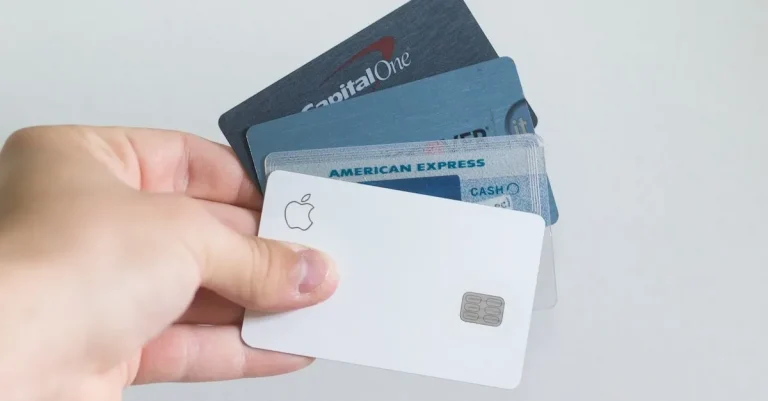How Much Do You Actually Pay If Bail Is Set At $250,000?
Getting arrested and having bail set can be an incredibly stressful and uncertain experience. You may hear the judge set bail at $250,000 and immediately wonder how you’ll be able to pay that amount to get out of jail.
If you’re short on time, here’s a quick answer to your question: You typically only have to pay a bail bondsman 10% of the total bail amount upfront as a fee to post your bail. So for a $250,000 bail, you’d likely pay around $25,000 to a bondsman.
In this comprehensive guide, we’ll explain exactly how bail and bail bonds work, how much you can expect to pay for a $250,000 bail, what options you have, and additional costs and factors to consider.
Understanding How Bail Works
When a person is arrested for a crime, they may be granted the opportunity to be released from jail before their trial by posting bail. Bail serves as a financial guarantee that the accused will appear in court for their hearings. If the accused fails to appear, the bail money is forfeited.
What is Bail?
Bail is a sum of money or property that is paid to the court as a guarantee that the accused will show up for their court dates. It is essentially a way to secure the release of the defendant from jail until their trial.
The amount of bail is determined by the court and is based on various factors, such as the severity of the crime, the defendant’s criminal history, and the likelihood of the defendant fleeing.
How is Bail Amount Determined?
The judge takes several factors into consideration when determining the bail amount. These factors include the seriousness of the crime, the defendant’s criminal history, ties to the community, employment status, and financial resources.
The purpose of bail is to ensure the defendant’s appearance in court, so the judge will set an amount that they believe is sufficient to incentivize the defendant to show up.
It’s important to note that the Eighth Amendment to the United States Constitution prohibits excessive bail. This means that the bail amount should not be set at an unreasonably high level that the defendant cannot afford.
However, the bail amount can still be substantial, especially for more serious crimes.
Paying Bail Yourself vs Using a Bondsman
When the bail amount is set, the defendant or their family has two options for paying it. They can either pay the full amount themselves or enlist the help of a bail bondsman.
If the defendant or their family decides to pay the bail themselves, they will need to come up with the full amount in cash or assets. This can be a significant financial burden, especially if the bail amount is high.
If the defendant or their family cannot afford to pay the full bail amount, they can turn to a bail bondsman. A bail bondsman is a professional who pays the bail on behalf of the defendant in exchange for a fee, typically 10% of the total bail amount. The bondsman will also require collateral, such as property or valuables, to secure the bond.
Using a bail bondsman can be a more affordable option for those who cannot pay the full bail amount upfront. However, it’s important to understand that the fee paid to the bondsman is non-refundable, even if the defendant is found innocent or the charges are dropped.
Additionally, if the defendant fails to appear in court, the bondsman may hire a bounty hunter to track them down. It’s crucial to weigh the pros and cons of paying bail yourself versus using a bondsman before making a decision. Each option has its own financial implications and potential risks.
Paying 10% to a Bondsman
When your bail is set at $250,000, you may be wondering how much you actually have to pay to get released from jail. In many cases, individuals turn to a bondsman for assistance. A bondsman acts as a surety, guaranteeing that the defendant will appear in court.
In exchange for their services, they charge a fee, typically 10% of the total bail amount.
Bondsman Fee is Typically 10%
When you work with a bondsman, you will need to pay them 10% of the bail amount, which in this case would be $25,000.
This fee is non-refundable and is how the bondsman makes their profit. It is important to note that this fee is set by state regulations and may vary slightly depending on your location.
Other Fees and Costs
In addition to the 10% fee, there may be other fees and costs associated with using a bondsman. These can include administrative fees, processing fees, and any fees for additional services provided.
These costs can vary depending on the bondsman and the specific circumstances of your case. It is important to carefully read and understand the terms and conditions of the agreement with the bondsman to avoid any surprises or hidden fees.
Getting Your Money Back
Once the case is resolved and the defendant has fulfilled their obligations to the court, the bail money is returned. However, the 10% fee paid to the bondsman is non-refundable and serves as their compensation for the risk they took in guaranteeing the bail.
It is also worth noting that if you choose to pay the full bail amount directly to the court, without the assistance of a bondsman, you can typically expect to have the full amount refunded to you once the case is closed.
For more information on bail bonds and the associated costs, you can visit websites such as Bailbond.com or Bailbonds.com, where you can find comprehensive resources and frequently asked questions.
Paying the Full Amount Yourself
When bail is set at $250,000, paying the full amount yourself can be a daunting task. However, it is not impossible. Here are some important factors to consider:
Coming Up with $250,000
Coming up with $250,000 for bail may seem like an insurmountable challenge, but there are a few options you can explore:
- Contact family and friends: Reach out to your loved ones and explain the situation. They may be willing to contribute towards your bail amount.
- Sell assets: Evaluate your assets, such as property or valuable possessions, that you could sell to cover the bail amount.
- Seek financial assistance: Consider applying for a loan from a financial institution or exploring crowdfunding platforms to help raise the funds.
It is crucial to weigh the pros and cons of each option and determine the best course of action based on your individual circumstances.
Getting Your Bail Money Back
Once the legal process is completed, you have the opportunity to get your bail money back. Here are the key points to keep in mind:
- Comply with court requirements: Ensure that you appear at all court hearings and follow any conditions set by the court. Failure to do so may result in forfeiture of your bail money.
- Patience is key: The process of returning bail money can take some time, as the court needs to verify the completion of your case. It is essential to be patient and stay in touch with your attorney for updates.
Remember, the bail amount is returned in full if you have paid it yourself. However, if you have used a bail bond service, a percentage of the total bail amount may be non-refundable.
For more information on the bail process and legal requirements, consider visiting reputable sources such as uscourts.gov or consulting with a legal professional.
Using Collateral for Bail
When bail is set at a high amount such as $250,000, coming up with the cash to pay it can be challenging for most people.
However, there is an alternative option that can help secure your release from jail without having to pay the entire bail amount upfront. This option is called using collateral.
Putting Up Your House or Property
One way to use collateral for bail is by putting up your house or property. If you own a property with enough equity, you may be able to use it as collateral to secure your release. This means that if you fail to appear in court, the property may be seized by the court to cover the bail amount.
It’s important to note that using your house or property as collateral can be risky. If you are unable to pay the bail or fail to appear in court, you could potentially lose your property. Therefore, it’s crucial to carefully consider the risks before using this option.
Bail with Auto Financing
Another option for using collateral for bail is through auto financing. If you own a vehicle that has enough value, you may be able to use it as collateral to secure your release. Similar to putting up your house or property, if you fail to appear in court, the vehicle may be seized by the court.
Auto financing for bail can be a viable option if you have a vehicle with a high value. However, it’s important to consider the terms and conditions of the financing agreement, as well as the potential risks involved.
Using collateral for bail can be a helpful solution for individuals who cannot afford to pay the full bail amount upfront. It provides an opportunity to secure their release while working towards resolving their legal matters.
However, it’s important to thoroughly understand the terms and risks associated with using collateral before making a decision.
Seeking a Bail Reduction
When faced with a bail amount as high as $250,000, it is natural to feel overwhelmed and unsure of how to proceed. However, it is important to remember that bail is not set in stone and there are avenues to seek a reduction. One such avenue is filing a bail reduction motion.
Filing a Bail Reduction Motion
To file a bail reduction motion, you will need to consult with your attorney who will guide you through the process. Your attorney will gather evidence and present compelling arguments to convince the judge that the current bail amount is excessive.
This evidence may include your financial situation, ties to the community, and your previous criminal record, if applicable. It is crucial to provide documentation and proof to support your claims.
For example, if you can demonstrate that you have strong community ties, such as steady employment or family members who depend on you, it may persuade the judge to lower the bail amount.
Additionally, if you can show that you are not a flight risk and pose no danger to the community, it can bolster your case for a bail reduction.
Asking for an Affordable Bail Amount
When requesting a lower bail amount, it is essential to present a reasonable and affordable figure that you can realistically pay. Your attorney can help you determine a suitable amount based on your financial circumstances.
It is important to note that the judge will take into consideration the seriousness of the charges against you and any potential flight risk or danger to the community.
During the bail reduction hearing, your attorney will argue for an affordable bail amount, highlighting your strong ties to the community and your commitment to appearing in court for all required proceedings. By presenting a well-prepared case and demonstrating that you will comply with all court orders, you increase your chances of a favorable outcome.
Remember, seeking a bail reduction requires the expertise of a skilled attorney who is well-versed in the legal process. They can navigate the complexities of the system and advocate for your best interests.
If you cannot afford an attorney, you may be eligible for a public defender who can assist you in seeking a bail reduction. For further information on bail reduction, you can visit the U.S. Courts website.
Conclusion
Having bail set at $250,000 can be an intimidating situation, but understanding your options is key. In most cases, you’ll end up paying a bail bondsman a 10% fee, so around $25,000 for a $250,000 bail.
But you may also be able to pay the full amount yourself, use collateral, or request an affordable bail reduction. Being informed and acting fast can help get you or your loved one out of jail quickly.
The bail system can be complex and stressful to navigate. But knowing what to expect for costs and fees can remove some uncertainty. Don’t hesitate to speak to a legal professional to understand your options fully.
With the right legal guidance, you can work to resolve the situation in the fairest and most affordable way possible.









